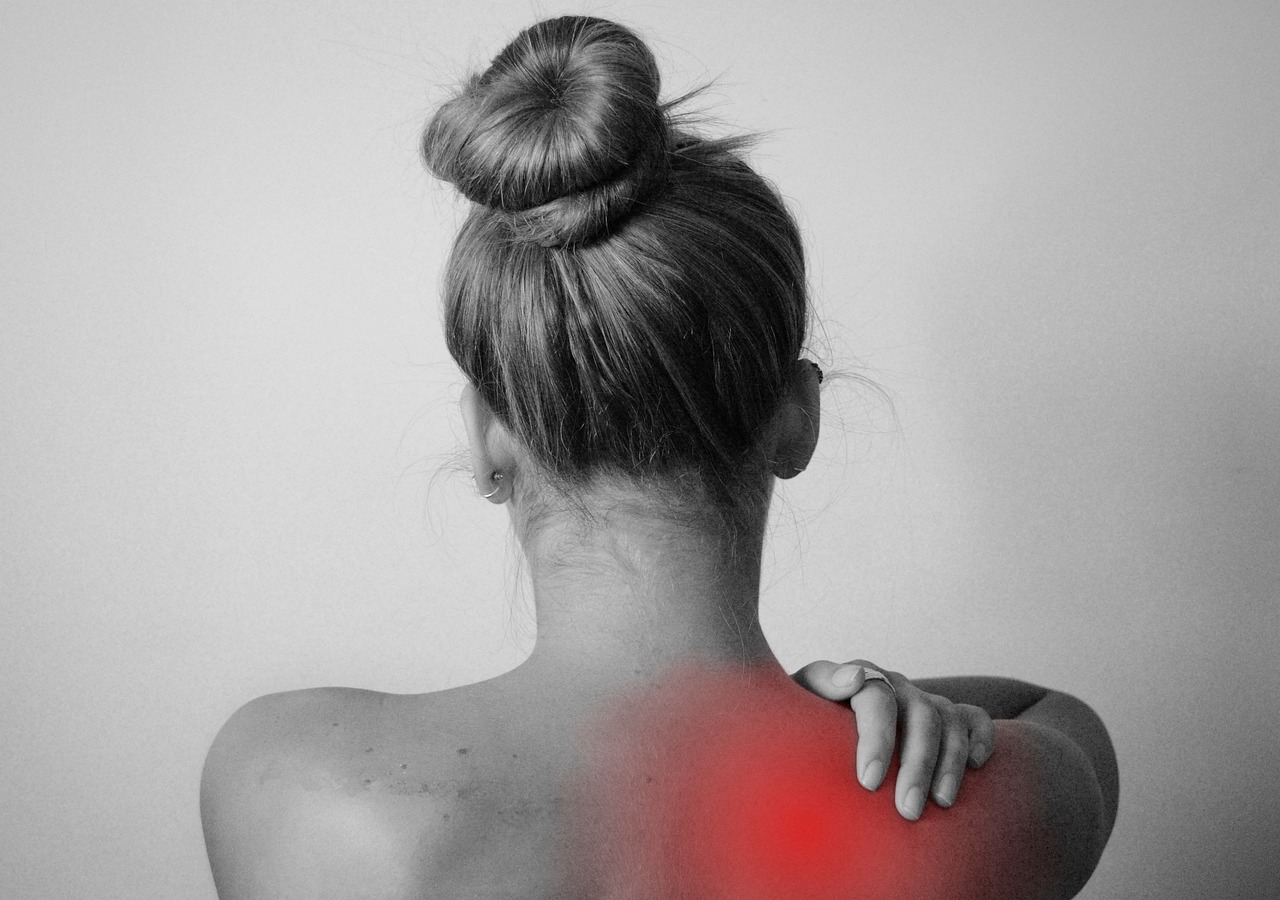

Severe middle back pain can be a debilitating condition that affects many areas of daily life. Whether it’s a dull ache or a sharp, knife-like pain – a stabbing sensation – middle back pain can make even the simplest tasks feel like monumental challenges.
This article aims to shed light on what middle back pain is, its symptoms, causes, and the various treatment options available to help you manage and alleviate this common issue.
Middle back pain refers to discomfort experienced in the thoracic spine, which is the area between the base of your neck and the bottom of your rib cage. This region is much more rigid than the cervical (neck) and lumbar (lower back) regions.
Still, the thoracic spine plays a crucial role in supporting the upper body and protecting vital organs. Persistent pain may indicate problems ranging from a pinched nerve or stiff muscles to compression fractures or other medical conditions.
Middle back pain symptoms can vary widely depending on the underlying cause. Common symptoms include:
Diagnosing middle back pain typically involves a physical exam. A doctor may use imaging tests such as X-rays, magnetic resonance imaging (MRI), or CT scans to identify structural issues like a herniated disc or damage to the thoracic and lumbar spine. The medical agent will also want to conduct an extensive medical history to determine if there are familial links to back pain issues or a history of sports injury.
Numerous factors can contribute to middle back pain. Let’s take a look at a few of these causal factors and then we’ll look at treatment options.
One of the most common causes is poor posture. Slouching or sitting for extended periods, especially in front of a computer or while driving, can strain the muscles and ligaments in the mid back.
Over time, this strain can lead to chronic pain and discomfort. Avoiding poor posture by keeping your back straight and shoulders back can help prevent this type of pain.
Overuse or sudden movements can lead to muscle strains or sprains in the middle back. This often happens during activities such as lifting heavy objects, twisting awkwardly, or a result of sports injury. Muscle strains can cause significant pain and may require rest and physical therapy for pain relief and to heal fully.
The thoracic spine contains intervertebral discs that act as cushions between the vertebrae. When these discs bulge or rupture, they can press on surrounding nerves, causing pain. Herniated discs in the mid back are less common than in the lower back, but they can still occur and lead to severe pain.
A variety of degenerative conditions may be at fault for middle back pain.
Arthritis, particularly osteoarthritis, can affect the joints in the spine, leading to inflammation and pain. This condition is more common in older adults and can cause chronic middle back pain. Managing arthritis often involves a combination of medication, physical therapy, and lifestyle changes.
Scoliosis is an abnormal curvature of the spine that can cause uneven stress on the back muscles. This condition may develop during childhood or adolescence and may lead to middle back pain if the curvature is significant. Treatment for scoliosis may include bracing, physical therapy, or surgery in severe cases.
Spinal stenosis is a narrowing of the spinal column which puts added pressure on the spinal cord and surrounding nerves. This may be precipitated by injury of the spinal discs or bone spurs. In addition, numbness and tingling down the legs and in the buttocks, weak muscles, or bowel or bladder control issues.
Injuries from accidental falls, or sports can damage the spine or surrounding tissues, leading to middle back pain. Trauma can cause fractures, dislocations, or soft tissue injuries that require medical attention. Recovery from such injuries may involve rest, physical therapy, and sometimes surgical intervention.
Medical treatments for middle back pain often involve a range of approaches. Let’s look at a list of potential methods to treat middle back pain.
Many patients try to address their back pain on their own as a first step toward relief. If you experience discomfort in your thoracic spine, try alternating using a heating pad and cold compress. This can improve blood flow through blood vessels and numb pain.
Adjusting your sleep position to a curled-up fetal position with a pillow between your legs may provide some relief.
Over-the-counter medications like ibuprofen or acetaminophen can help manage pain and inflammation or reduce swelling. In some cases, doctors may prescribe stronger medications, such as muscle relaxants or anti-inflammatory drugs, to provide more effective relief.
It’s important to use these medications as directed by your doctor to avoid potential side effects.
Physical therapy is a cornerstone of middle back pain treatment. A physical therapist can design a personalized exercise program to address muscle weakness and strengthen them, improve spinal mobility, and enhance posture.
These exercises can help alleviate pain and prevent future episodes. Physical therapy may also include techniques such as manual therapy, heat or cold therapy, and electrical stimulation.
Chiropractic care involves spinal adjustments to correct misalignments and improve mobility. Chiropractors use hands-on techniques to manipulate the spine, which can help reduce pain and improve function.
This type of care can be particularly effective for individuals with mechanical issues contributing to their middle back pain. Make sure to communicate all symptoms to the care provider during their interview with you as they will want to ensure they do not make the pain worse through incorrect techniques.
Massage therapy can be beneficial for reducing muscle tension and improving circulation in the mid back. A skilled massage therapist can target specific areas of discomfort, helping to relieve pain and promote relaxation. Regular massage sessions can be a valuable part of a comprehensive pain management plan.
Making lifestyle changes can have a significant impact. Maintaining a healthy weight reduces the strain on your back while practicing good posture helps prevent muscle fatigue and discomfort.
Staying active with regular exercise, such as walking, swimming, or yoga, can strengthen the back muscles and improve overall spine health.
In severe cases where conservative treatments are not effective, surgical intervention may be necessary. Surgery can address structural issues such as herniated discs, spinal fractures, or severe scoliosis. The type of surgery will depend on the specific condition and may involve procedures such as:
Surgery is typically considered a last resort after other treatments have been exhausted.
Middle back pain is a common issue that can significantly impact your quality of life. Understanding the causes and symptoms is the first step toward finding effective treatment. By exploring various treatment options and making lifestyle changes, you can manage your pain and improve your overall well-being.
If you’re experiencing persistent or severe middle back discomfort, it’s essential to consult with a healthcare professional to determine the best course of action for your specific situation.

0 comments